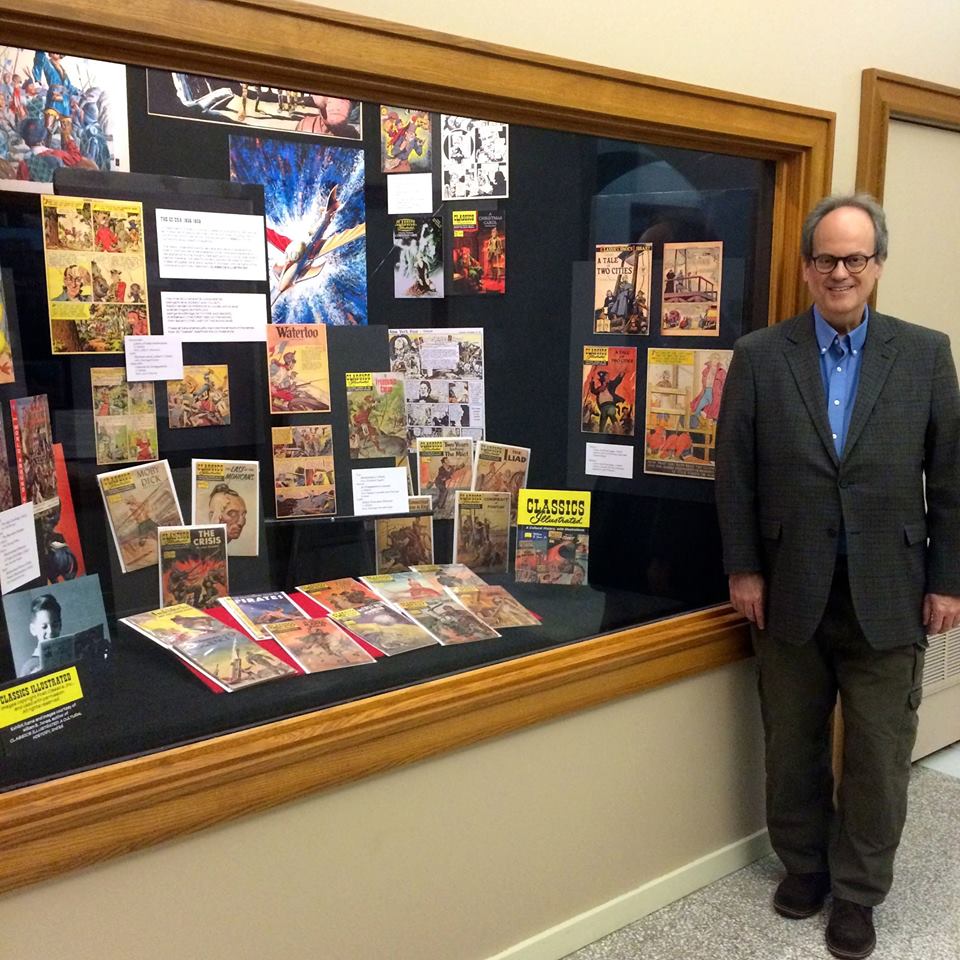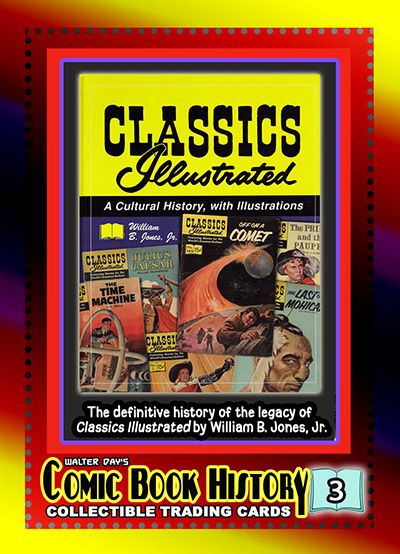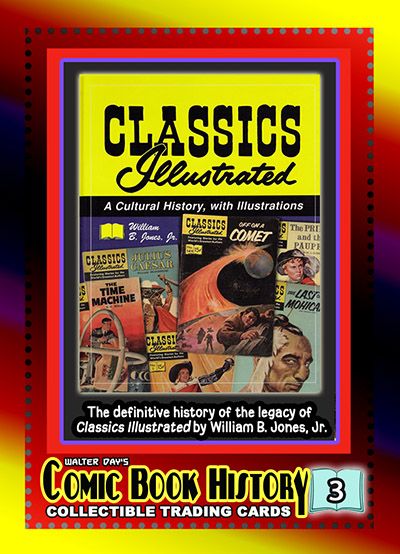- Home
- Articles
- Trading Card Spotlight
- Comic Book History Trading Card Spotlight - William B. Jones, Jr.
Comic Book History Trading Card Spotlight - William B. Jones, Jr.
Our first Walter Day Comic Book History Trading Card Spotlight features William B. Jones, Jr., who is displayed on card number 3, from the Comic Book History Collection. William is the author of Classics Illustrated: A Cultural History, Second Edition (McFarland, 2011, rev. 2017) and the award-winning Petit Jean: A Wilderness Adventure, illustrated by Gary Zaboly (Plum Street Publishers, 2016); a contributor to The Oxford Book of Adaptation Studies (Oxford University Press, 2017), The Power of Comics (2009, 2015), and Icons of American Comic Books (Greenwood, 2013); the editor of and a contributor to Robert Louis Stevenson Reconsidered: New Critical Perspectives (McFarland, 2003); and co-editor of A Spectrum Reader (August House, 1991). Bill is currently working on a third edition of the Classics Illustrated book.
The Comic Book History card set is a personal art project created by Walter Day to honor and commemorate the legacy of the comic book industry and comic fandom.
When did you write your Classics Illustrated book and what motivated you to do so?This has been truly a labor of love. I was introduced to Classics Illustrated as a five-year-old, and the series had profound impact on my childhood imagination and my lifelong passion for literature. I wanted to tell the stories of the artists, scriptwriters, and editors who produced the comic-book adaptations of Moby-Dick, Les Misérables, Dr. Jekyll and Mr. Hyde, and other titles that enriched my developing imagination. The research and writing have been an ongoing process since 1993, when I first sought permissions from Patrick Frawley of the Frawley Corporation, the then-owner of Classics Illustrated, and its licensee, First Classics, Inc. (which later purchased the publication outright). In November of that year, I interviewed and corresponded with CI artists Lou Cameron, Norman Nodel, and Rudolph Palais, and then wrote first drafts of my chapters on them. The first edition was published by McFarland & Co. in November 2001 and was formally launched at a lecture and book-signing at the Library of Congress in March 2002. Subsequently, McFarland asked me to update and expand the work for a second edition, which was published in August 2011. It contained more artist profiles and other information on the revived CI series amounting to 381 pages, as well as more than 300 illustrations. Now I’m at work on a third edition to be published next year.
What does it take to be a comic book historian?
I’d say it’s essential to understand the evolution of comic books as a significant art form, from William Hogarth to Rodolphe Töpffer to Winsor McCay to the early-to-mid-20th-century New York art shops and beyond. Although specialization in one genre or style or period or publisher is probably inevitable and can be a strength, a narrow refusal to acknowledge the merits of artwork and storytelling outside one’s familiar frame of reference can limit the range of a writer’s contribution.
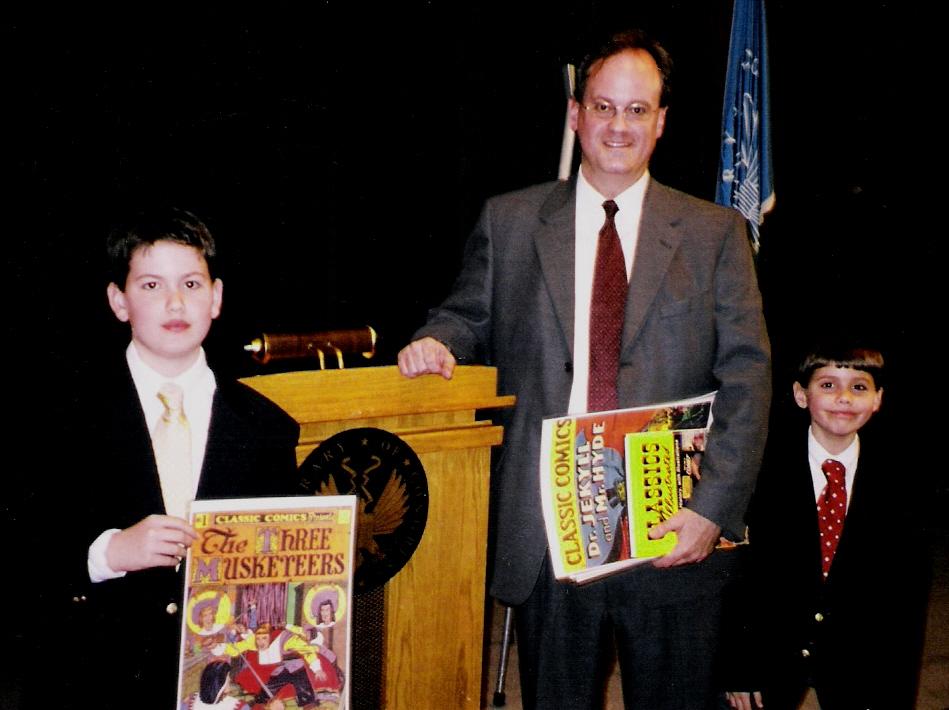
What advice do you have for others who want to write about the comic book today?
Be curious, be open, be exacting.
Did you ever think when you were younger you would be on a trading card?
Never. Trading cards when I was kid were the domain of baseball heroes—Duke Snider, Willie Mays, Stan Musial—well outside the realm of possibility for a bookish, daydreaming outfielder on neighborhood teams.
When did you first meet Walter Day and where was it at?
Where so many meet today—on Facebook.
If you could describe Walter Day in one word, what would that word be and why?
Generous. Walter is generous with his knowledge, his enthusiasm, and the fruits of his research.
Do you remember your first comic book you read and what do you remember about it?
The first comic book I read was Classics Illustrated No. 129, Davy Crockett (Nov. 1955), which I found around Christmas 1955 on a spinner rack in my family’s neighborhood drugstore. The dramatic painted cover by John Parker first caught my attention, and the energy shown in Lou Cameron’s depiction of Davy in the interior artwork won me over, even if the protagonist looked nothing like Fess Parker.
What are your opinions about today’s generation of comic books? How do you compare them to older, classic ones?
I love the variety of approaches to sequential-art narrative and the media options in today’s comics. The old and new have their distinctive qualities that make them integral parts of the larger storytelling tradition.
Are you still involved with writing books today, and what role do you play?
Classics Illustrated: A Cultural History has kept me busy for nearly thirty years as I’ve worked my way through three editions of the book. I’ve also written a novella, Petit Jean: A Wilderness Adventure, illustrated by Gary Zaboly, that won an award for historical fiction for young readers.
What is your favorite genre of comics and why?
For older comics, I obviously tend to favor literary adaptations. At present, I am drawn to nonfiction comics/graphic novels by the likes of Art Spiegelman, Marjane Satrapi, and Joe Sacco.
Do you prefer physical comic books or digital and why?
Physical, because of the joy one takes in the printing, the texture, the handling.
What comics from the older years (70’s and 80’s) were your favorite and why?
Anything from the mid-‘60s to the ‘80s written by Roy Thomas, from his tenure with Marvel to DC and back to Marvel.
If you could own series of comic books, what would they be and why?
Well, obviously from my perspective, Classics Illustrated. For 80 years, the series has introduced generations of young readers to major works of world literature, from Homer to Twain, from Shakespeare to Brontë, from Goethe to Verne. But the present owner, First Classics Inc., and its licensee, CCS Books, have done an admirable job of carrying the legacy of Albert Kanter, who founded Classic Comics/Classics Illustrated in 1941, forward into the 21st century. My only addition would be an expansion of authors represented—F. Scott Fitzgerald, Toni Morrison, Gabriel García Marquez, Kate Chopin, Ralph Ellison, etc.
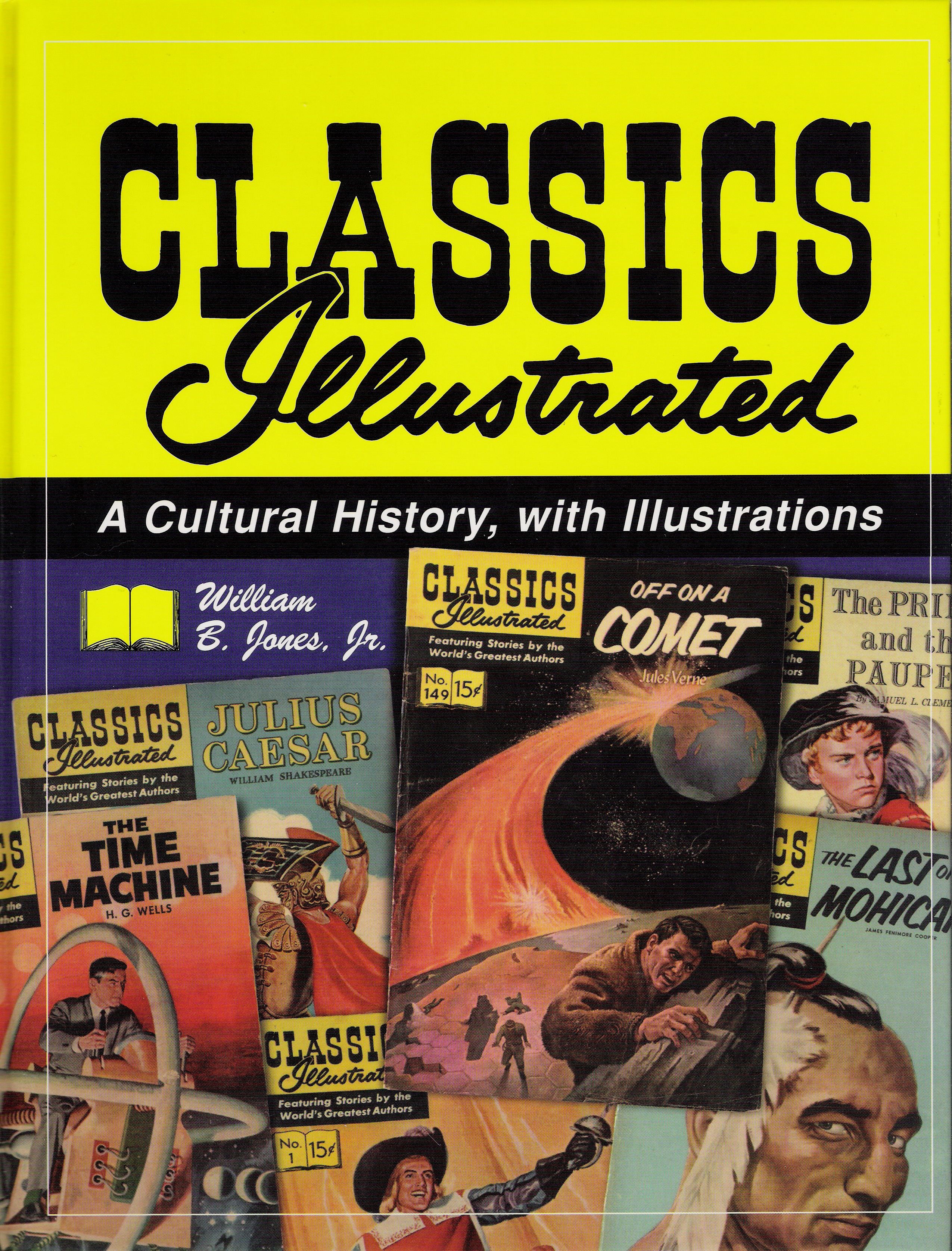
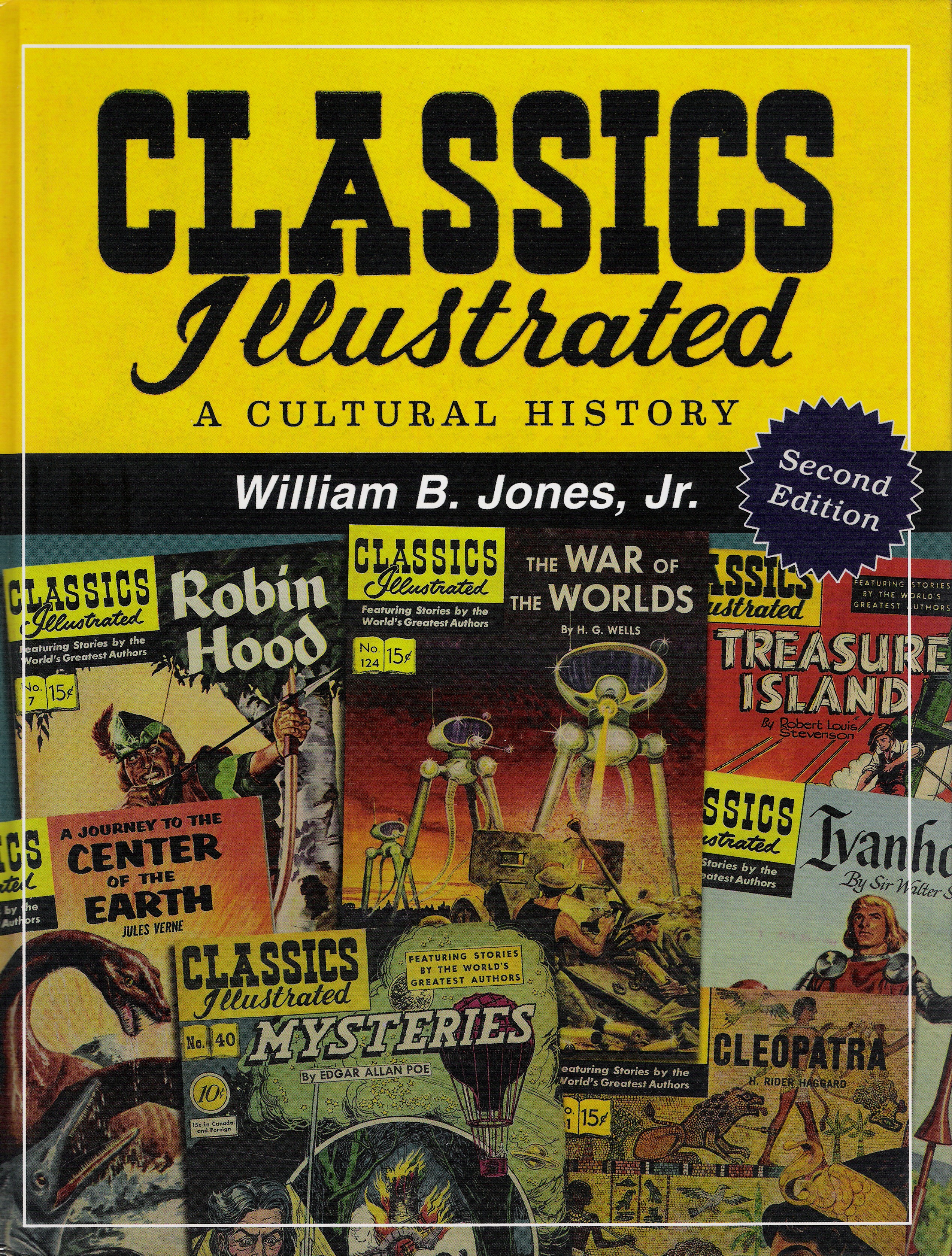
How comic book art improved in books and magazines from the past to the present?
Each generation of artists has built on the work of its predecessors. Printing technology-imposed constraints on so-called ‘Golden Age’ artists played some role in perceived shortcomings, but so many artists of the earlier era (such as Matt Baker, Reed Crandall, and Jack Kirby) far transcended any external limitations. Styles, such as EC midcentury realism, come and go, and today’s artists have a wide range of influences and options.
Which illustrator makes the best comics and why?
I tend to think historically and have favorite illustrators from different eras and different genres. Of my current favorites, I’ve been rereading and admiring Joann Sfar’s graphic-novel series ‘The Rabbi’s Cat’ (‘Le Chat du Rabbin’). I enjoy the storytelling and the multicultural French-Jewish-Arab milieu.
Are reading comics good for relieving stress?
Depends on the comic book. I usually don’t read comics to relieve stress—Mozart, Haydn, and Schubert fill that comfort-food function for me.
Do you like it when Hollywood makes a movie from the comic books?
I like spectacle as much as the next guy. Some of the reimagining has been artistically satisfying. But I have major problems, ethically, with the paltry amount of compensation that the more-than-well-funded Marvel-Disney behemoth pays comic-book creators.
Who is your favorite comic book character and what makes that character special?
George Herriman’s Krazy Kat (and the inevitable Ignatz Mouse), who appeared in Hearst newspaper strips between 1913 and 1944. Unrequited love never had a funnier or more philosophical protagonist—and antagonist. An ersatz Krazy Kat published by Dell Comics in the 1950s should not be confused with the original. Eclipse Comics and Fantagraphics produced excellent reprints of the original series.
What springs to mind when you hear the term ‘Comic Books’?
At best, imaginative, innovative storytelling.
If you can design your comic book today, what would it be about and who would be the main character?
I have always wanted to see The Three Musketeers (incidentally, the first title in the Classics Illustrated series) turned into a modern comic-book superhero series. D’Artagnan would naturally be the main character, as he was in the original trilogy by Alexandre Dumas. A complex, impulsive person, who is torn between love and duty but is loyal to his king and his friends, he begins as a naive provincial bumpkin, yet he grows, learns from his mistakes, and eventually becomes the commander of the King’s Musketeers. It might be fun as a video game, as well.
What is the best way to find your books and to order them?
From Amazon (search ‘Jones Classics Illustrated A Cultural History’) and other online sources. You can also order directly from the publisher, McFarland (www.mcfarlandpub.com).
Where do you see the comic book industry in the next 10 years?
Growing, with ever-increasing sophistication and artistry in storytelling and themes.
